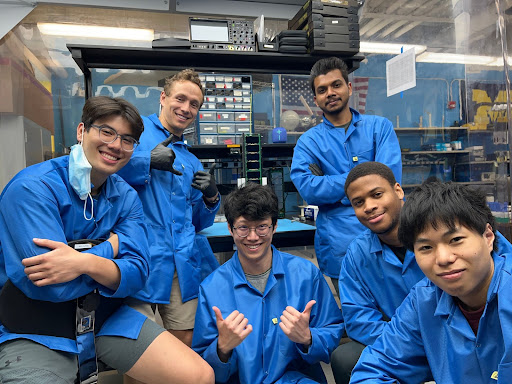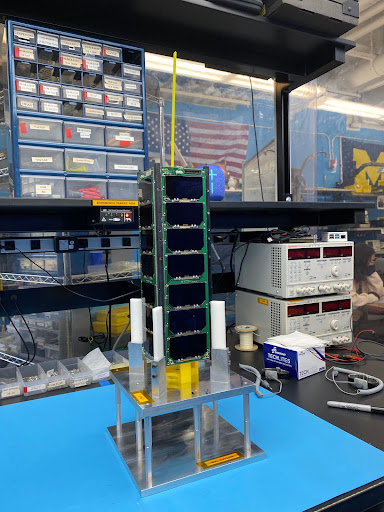
Student-led cubesat project being deployed from the International Space Station
Payload tests the flexibility of structural materials in space

Payload tests the flexibility of structural materials in space
An upcoming SpaceX Falcon 9 resupply mission to the International Space Station will carry more than Tang for the astronauts. The November launch also carries a cubesat created by University of Michigan Master’s students.
The cubesat, named Mario, will be deployed from the ISS to conduct repeated, three-hour long tests over the next 15 months. Cubesats like Mario are increasingly used for scientific experiments and communication links, offering researchers and companies the opportunity to collect data that influences new technologies and innovation that enhances space exploration.

The University of Michigan has a storied history of cubesat development, one that uniquely provides graduate and undergraduate students the opportunity to learn about and develop cubesats in hands-on course applications. This is such a case.
Mario was years in the making. Research by Professor Dan Inman led to a collaboration with Extreme Diagnostics Inc, who sought a partner to build a low orbit vehicle that could undertake experiments for their structural materials. Inman worked with the MXL Lab under Professor James Cutler to develop what they needed.
Carrying Piezoelectric materials, the payload has two attached bands which will bend to use as actuators. The objective of the research is to determine performance of beams, their flexibility and viability of this material as a structural component used for precise actuation in space.
Mario autonomously will receive commands and listen, understand, and adapt to digital commands. Data will continuously be sent back to the ground station in the U-M Aerospace department which communicates with the cubesat for operation and troubleshooting as needed. The team will collect data over the life of the cubesat experiments, perform analysis, identify applications for a follow up mission.


Space’s thermal environment induces stresses on structure, causing it to slightly bend and flex. In high pointing precision applications like Earth or space pointed telescopes, these small structure deformations can propagate to pointing errors outside tolerances. Precise actuators like piezoelectric materials can compensate for such errors, and generally manipulate the spacecraft attitude more precisely. Furthermore, piezoelectric actuators can perform these manipulations with a lighter form factor and at lower costs.
A diverse group of Masters students from Japan, India, Taiwan, Vietnam, Nigeria, Ghana and the US assembled the prototype developed over the last couple of years to create the finished cubesat this summer. They will travel to Cape Canaveral to watch their finished project launch into space.
Tran Anh Nguyen, Masters alum from the lab and current research engineer on staff, has been part of the cubesat team. “I’ve never seen a launch before, but I’m excited to join a few of our alums who work at SpaceX and our cubesat development team to see our project get launched into space up close.”
After years of hard work by dozens of students, this group is excited to see the end result. Launching in early December, Tran Anh says, “The beach and a rocket launch, it’s the best combination.”
Cubesat Company:
Mario isn’t traveling alone. U-M sophomore Jason Chen was part of a cubesat team in high school who’s finished project will travel to ISS for similar deployment. TJREVERB is a 2U cubesat that’s meant to test the viability of using Iridium radios as the primary communication method of cubesats, which was a hot topic at the time of the mission’s conception in 2016. Chen contributed to the electrical power system and the Attitude Determination and Control Systems, which kept the cubesat oriented in a way that maximized the solar array’s exposure to the sun, while keeping communication antennas pointed towards the ground station or Iridium satellites.
Jason comments, “I definitely think this entire experience has been really full-circle for me. I came from a scrappy developmental program which faced many major challenges that, at the worst of times, casted doubts on ever making it to the launchpad. I owe much of my development and passion for space engineering to TJREVERB, and now having seen the well-developed and professional nature of the cubesat program here at Michigan, it just seems like the perfect conclusion to have both these projects rideshare on the same launch. TJREVERB was 7 years in the making, so I think it’ll be a really emotional event for both me and my former teammates.”
Whether high school or college, working on a unique and meaningful project like these has a lasting impact.